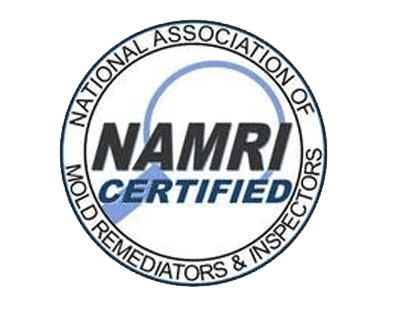Have you ever experienced the frustration of a washing machine overflowing? It can be a messy and inconvenient problem to deal with. But have you ever wondered what causes this issue in the first place? Is it simply a matter of too much laundry? Or could there be underlying factors at play?
In this article, we will delve into the common causes of washing machine overflow and explore the mechanisms behind this troublesome issue. By understanding the root causes, you’ll be better equipped to troubleshoot and prevent overflow problems in the future.
Key Takeaways:
- Understanding the causes of washing machine overflow is crucial for effective troubleshooting.
- Common culprits include clogged drains, faulty inlet valves, and blocked pressure switch tubes.
- Oversudsing, unbalanced loads, and worn out parts can also contribute to washing machine overflow.
- Preventive measures, such as following manufacturer guidelines and avoiding overloading, can help reduce the risk of overflow.
- If overflow problems persist, professional repair may be necessary.
Understanding Washing Machine Overflow
Washing machine overflow occurs when the water level exceeds the intended limit, leading to the spillage of water from the machine. This can be a frustrating and messy experience for users. The overflow of water can be attributed to various factors, including issues with the water level sensor or mechanical failures within the washing machine.
To better understand the mechanisms involved in washing machine overflow, it is important to explore these factors in detail. The water level sensor, also known as the pressure switch, is responsible for detecting and regulating the water level inside the machine. If the sensor malfunctions or becomes faulty, it may inaccurately detect the water level, resulting in overflowing water. Mechanical failures, such as problems with the inlet valve or other components, can also contribute to overflow issues.
Identifying and resolving the underlying cause of washing machine overflow is crucial to prevent future occurrences and minimize the risk of water damage. By understanding how the water level sensor and other components interact, homeowners can take appropriate measures to address the problem effectively.
Common Culprits Behind Overflow Issues
When encountering a washing machine overflow, it is important to identify the underlying causes for effective troubleshooting. Several common culprits can lead to this issue, including a clogged drain, faulty inlet valve, and a blocked pressure switch tube.
Clogged Drain: One possible cause of washing machine overflow is a clogged drain pipe. When the drain pipe is obstructed, water cannot flow out of the machine properly, resulting in overflow. Regularly checking and cleaning the drain pipe can help prevent this issue.
Faulty Inlet Valve: Another culprit behind washing machine overflow is a faulty inlet valve. The inlet valve is responsible for regulating the water intake into the machine. When the valve fails to function correctly, it can allow excessive water to enter the machine, leading to overflow. Inspecting and repairing or replacing the faulty inlet valve can resolve this problem.
Blocked Pressure Switch Tube: The pressure switch tube plays a crucial role in detecting water levels inside the washing machine. If the tube is blocked or restricted, it can affect the sensor’s ability to accurately detect the water level, causing the machine to overflow. Cleaning or unblocking the pressure switch tube can help restore proper functionality and prevent overflow issues.
Identifying these common culprits behind washing machine overflow can guide homeowners in troubleshooting and addressing the problem effectively. By understanding these potential causes, users can take the necessary steps to prevent overflow and maintain a properly functioning washing machine.
What would cause a washing machine to overflow?
There are several scenarios that can cause a washing machine to overflow. One common issue is excessive sudsing, caused by using too much detergent or the wrong type for the machine. When the detergent creates an abundance of suds, it can overwhelm the machine and result in an overflow.
An unbalanced load is another factor that can lead to washing machine overflow. When clothes are unevenly distributed within the machine, it creates an imbalance during the spin cycle. This imbalance affects the machine’s stability and can cause it to overflow as a result.
In addition to oversudsing and unbalanced loads, worn-out or malfunctioning parts can contribute to overflow problems. Components such as the water inlet valve or water level sensor may become worn out over time, leading to inaccurate water level detection and consequent overflow.
It’s important to address these issues promptly to avoid further damage to the washing machine and potential water damage in your home. By understanding the causes of overflow and taking appropriate measures, you can prevent this inconvenience and ensure the smooth operation of your washing machine.
Detecting and Addressing Overflow Problems
Detecting and addressing washing machine overflow problems promptly is essential for preventing damage and inconvenience. To prevent overflow, it is important to follow the manufacturer’s guidelines and adhere to the recommended preventive measures. Some troubleshooting tips can help you identify and resolve overflow issues on your own, but in certain cases, professional repair may be necessary.
Preventive Measures
To minimize the risk of washing machine overflow, it is crucial to take preventive measures. First, always follow the manufacturer’s guidelines and instructions for your specific machine. This includes using the correct type and amount of detergent, as excessive sudsing can lead to overflow. Additionally, avoid overloading the machine with laundry, as an unbalanced load can affect its stability and contribute to overflow problems.
Troubleshooting Tips
If you encounter an overflow issue with your washing machine, there are some troubleshooting steps you can take to address the problem. Start by resetting the machine according to the manufacturer’s instructions. This may help resolve minor glitches or errors that could be causing the overflow. Next, inspect and clean the drain pipe, as a clog in this area can prevent proper water drainage and result in overflow. Similarly, checking the inlet valve for any faults or blockages and cleaning the pressure switch tube can help ensure the accurate detection of water levels.
Professional Repair
If all preventive measures and troubleshooting tips fail to resolve the overflow problem, it may be time to seek professional repair services. Experienced technicians can diagnose and fix complex issues that require specialized knowledge and tools. They can also recommend replacement of worn-out or malfunctioning components, such as the water inlet valve or water level sensor, if necessary. Professional repair can provide a long-term solution and prevent recurrent overflow problems.
Addressing washing machine overflow issues promptly not only prevents potential damage to your machine and surrounding areas but also ensures the efficient functioning of your appliance. By incorporating preventive measures, troubleshooting tips, and seeking professional repair when needed, you can maintain a properly functioning washing machine and avoid the inconvenience of overflow incidents.
Conclusion
Dealing with a washing machine overflow can be a frustrating and messy experience. However, by understanding the causes and implementing preventative measures, homeowners can minimize the risk of this issue and ensure smooth and efficient laundry cycles.
One of the key steps to preventing washing machine overflow is to follow the manufacturer’s guidelines. These guidelines often specify the appropriate amount of detergent to use and the maximum load capacity for the machine. By adhering to these recommendations, homeowners can avoid excessive sudsing and unbalanced loads that can lead to overflow.
In addition, regular maintenance is crucial for preventing overflow problems. Homeowners should check and clean the drain pipe, inlet valve, and pressure switch tube on a regular basis. Clearing any blockages or buildup in these components can help ensure proper water flow and accurate water level detection, reducing the risk of overflow.
If despite these preventative measures, washing machine overflow issues persist, it may be necessary to seek professional assistance. A repair technician with expertise in washing machine repairs can diagnose and resolve the problem effectively. They will be able to inspect components, such as the water level sensor and inlet valve, and recommend the appropriate repairs or replacements.
By taking proactive measures and addressing any overflow problems promptly, homeowners can maintain their washing machines’ efficiency and prolong their lifespan. With these troubleshooting and preventative tips in mind, laundry day can be a stress-free experience without the worry of a washing machine overflow.
FAQ
What would cause a washing machine to overflow?
There are several scenarios that can cause a washing machine to overflow. One common issue is excessive sudsing, caused by using too much detergent or the wrong type for the machine. An unbalanced load, where clothes are unevenly distributed, can also lead to overflow as it affects the machine’s stability. Additionally, worn-out or malfunctioning components, such as the water inlet valve or water level sensor, can contribute to overflow problems.
How does washing machine overflow occur?
Washing machine overflow occurs when water exceeds the intended level, resulting in spillage from the machine. This can happen due to various factors, including issues with the water level sensor or mechanical failures within the machine. Understanding the mechanisms involved in washing machine overflow is essential to identify and resolve the problem effectively.
What are the common culprits behind overflow issues?
Several common culprits can lead to a washing machine overflow. One possible cause is a clogged drain pipe, which can prevent water from flowing out of the machine properly. Another culprit is a faulty inlet valve, which may fail to regulate the water intake, causing excess water to fill the machine. A blocked pressure switch tube can also contribute to overflow problems, as it affects the sensor’s ability to detect water levels accurately.
How can I detect and address washing machine overflow problems?
Detecting and addressing washing machine overflow problems promptly is essential for preventing damage and inconvenience. To prevent overflow, it is important to follow manufacturer guidelines, use the right amount of detergent, and avoid overloading the machine. Regularly checking and cleaning the drain pipe, inlet valve, and pressure switch tube can also help prevent overflow. If overflow issues persist, troubleshooting steps such as resetting the machine, inspecting components, or seeking professional repair might be necessary.
What should I do if my washing machine continues to overflow?
If your washing machine continues to overflow despite following preventive measures and troubleshooting tips, it is advisable to consult a professional repair technician. They can provide expert assistance in identifying and resolving the underlying issues effectively, ensuring that your washing machine operates smoothly and efficiently.



























